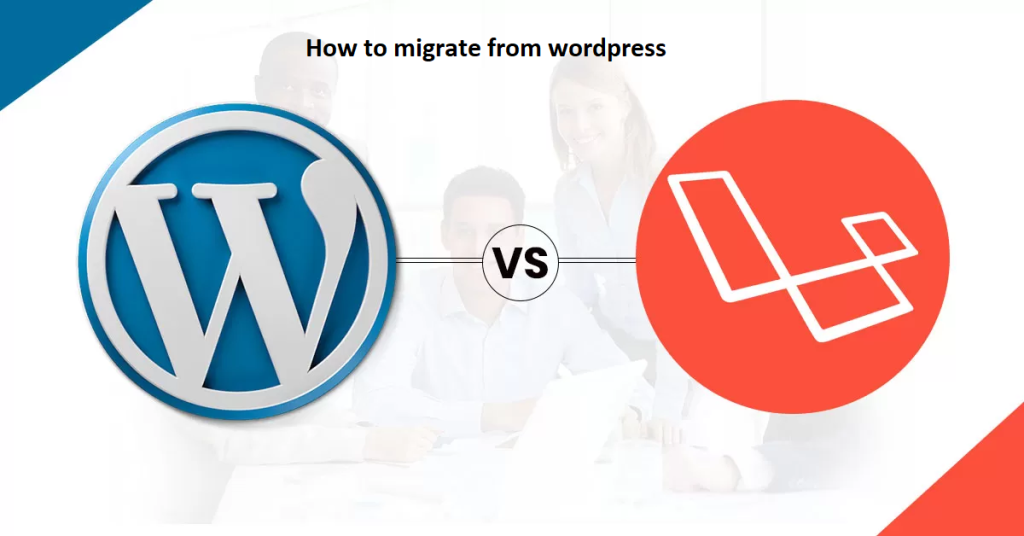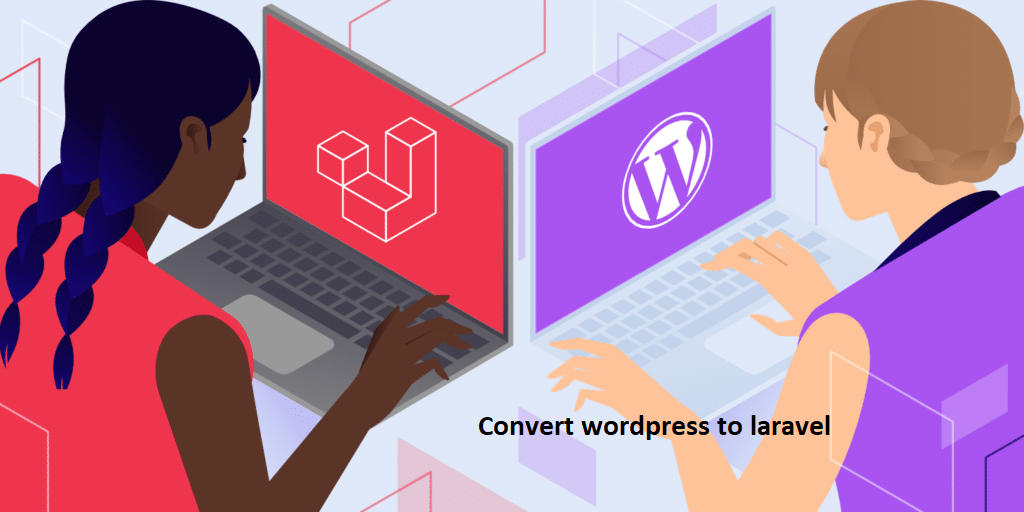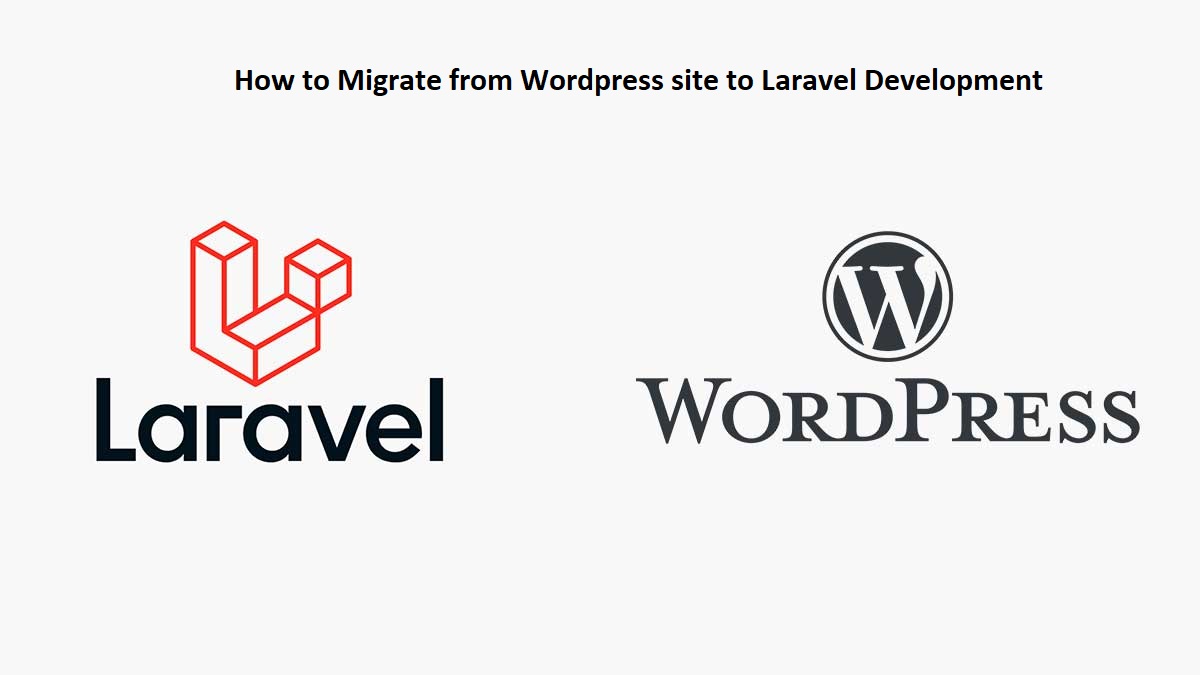Introduction
Converting from WordPress to Laravel improves website functionality, performance, and security. WordPress is a powerful content management system, whereas Laravel is a flexible framework for developing complex online apps. This post explains how to easily convert a WordPress site to Laravel.
Understanding the Fundamentals
Because WordPress is such an easy-to-use technology, a lot of people use it. This program is popular among bloggers, small businesses, and startups since it is easy enough for non-techies to use. But Laravel is a powerful framework designed for developers that need to create more regulated, scalable, and adaptable web projects. Laravel’s architecture is ideal for complex, high-performance web applications since it places a strong emphasis on modularity and clean code.
Knowing the best technique to migrate a WordPress website to Laravel is essential for anyone trying to enhance the functionality and efficiency of their web application. This tutorial will examine WordPress migration strategies and provide step-by-step instructions for smoothly transitioning WordPress to Laravel. This material will assist you in navigating the intricacies of such a transfer, regardless of your background as a developer or business owner.
Organizing the Process of Migration
| Step | Description | Details/Notes | ||
| 1. Site Audit | Make a thorough examination of your present WordPress website.
|
All current features, themes, plugins, and custom code should be documented.
|
||
| 2. Identify Essential Features | Determine which features are essential for the new Laravel site. | List features that are critical to retain and prioritize them in the migration process. | ||
| 3. Modify/Remove Features | Determine which aspects can be enhanced or removed. | Determine whether underperforming elements require improvement or elimination by evaluating them.
|
||
| 4. Develop Migration Plan | Make a thorough plan for your migration.
|
Describe the procedures, timetable, and materials needed for the move.
|
||
| 5. Allocation of Resource
|
Give time, people, and tools—all the resources that are required.
|
Give team members assignments and make sure the required hardware and software are available.
|
||
| 6. Development of Timelines
|
For every stage of the migration, set a reasonable deadline.
|
To maintain project momentum, assign due dates to each job and milestone.
|
||
| 7. The Methodical Method
|
Segment the migration procedure into doable chunks.
|
For every phase of the migration, provide precise instructions and guidelines.
|
||
| 8. Evaluation of Risks
|
Determine any hazards or difficulties that may arise.
|
Create ways to reduce risks and account for unforeseen events.
|
||
| 9. Plan of Communication | Create a communication strategy to inform relevant parties.
|
Plan frequent check-ins and updates with the team and any relevant parties.
|
||
| 10. Method for Testing
|
Provide an extensive testing plan to guarantee functionality after migration.
|
user acceptance testing (UAT), integration testing, and unit testing.Make sure your plan includes
|
||
Installing Laravel Framework
An effective migration requires that your Laravel environment be set up. First, set up your development server with Laravel installed. Ascertain the installation and configuration of all required components, including PHP, Composer, and a database server. The pre-installed Laravel utilities, such Valet and Homestead, help streamline setup and offer a standardized developers environment.
Moving Databases
Among the process’s most challenging elements is database migration. Start by utilizing programs like phpMyAdmin or WP-CLI to export your WordPress database. To comprehend the relationships and organization of the data in your WordPress database, analyze the exported data. Create a new database schema that meets the requirements of your application by utilizing Laravel’s migration and seeding features. To change the data so that it matches the new schema, custom migration scripts could be required. Eloquent ORM from Laravel can make database interaction smooth.

Replacing Function
It takes special module and component development to recreate the functionality of your WordPress site in Laravel. Begin by implementing fundamental functionalities like content management, user authentication, and SEO optimization. The development process can be accelerated by Laravel’s vast package library and modular architecture. To create a reliable and maintainable application, make sure you take advantage of Laravel’s strong features, like controllers, service providers, and middleware.
The Migration of Theme and Design
Extracting the HTML, CSS, and JavaScript from your current theme is a necessary step in moving your WordPress website’s design to Laravel. Make sure the design stays true to your brand identification as you adapt these assets to Laravel’s Blade templating engine. To guarantee an uninterrupted user experience on various devices and screen sizes, pay close attention to responsive design concepts.
Testing and Data Integrity
During transfer, maintaining data integrity is crucial. Make that the new application works properly and that all data has been migrated accurately by conducting extensive testing. To automate and expedite the process, make use of Laravel’s testing features, such as feature, integration, and unit testing. To make sure that the program lives up to end users’ expectations, user acceptability testing, or UAT, is crucial.

Implementation
Deploy your new Laravel application after the migration is finished and extensively tested. Select a reputable hosting company like DigitalOcean, AWS, or Linode that offers Laravel support. Install the program using version control systems such as Git, then create pipelines for continuous integration and continuous deployment (CI/CD) to enable continuous maintenance and upgrades. Verify that all database connections, environment variables, and other important settings are set up appropriately.
Considerations After Migration
Once the site has been deployed, keep an eye on its performance. Utilize analytics software to monitor user activity, website functionality, and possible problems. Be ready to respond swiftly to any issues that arise after deployment. To keep speed and security standards high, make sure you regularly update your Laravel application and all of its dependencies. Interact with your users to get their input and make the app better every time.
In summary
The process of switching from WordPress to Laravel can greatly improve the functionality of your online application. It is demanding yet profitable. You may use Laravel’s robust framework to create a highly performant, scalable, and adaptable web application that is suited to your particular requirements by carefully planning and carrying out the migration. By approaching the shift strategically, you can open up new opportunities for your online presence.
If you need any WordPress to Laravel migration for your website, please contact us.
